Mosaics in Newcastle upon Tyne
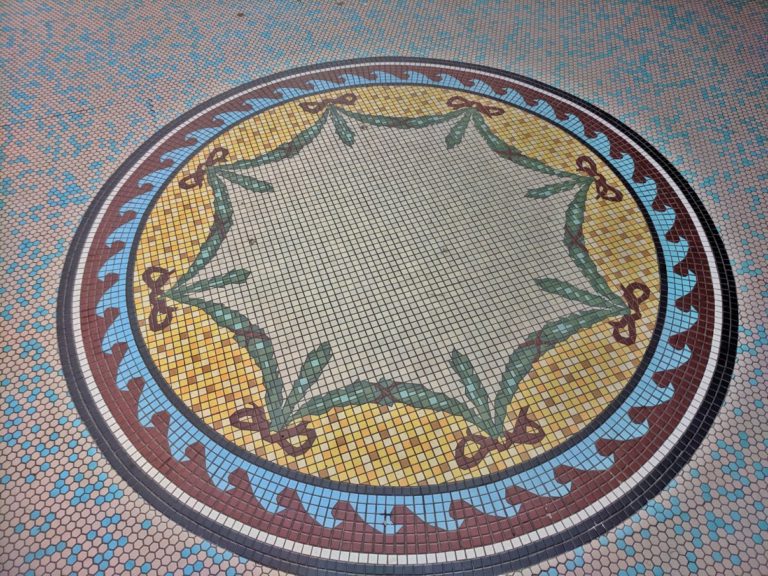
Central Arcade Mosaic Floors – IBA – (1990’s)
The original glass mosaic floor (1906), by Rust’s Vitreous Mosaics of Battersea, wore out and had to be replaced in the 1990’s by the American Olean mosiacs, pictured.. Newcastles most beautiful shopping arcade also has a fine selection of Burmantofts tiles. More information IBA Architects Tags: floor mosaics

Tyneside Cinema Mosaic Floors (1936)
Tyneside Cinema, full of Art Deco adornments, especially interesting on the ground floor and first floor are the original glass mosaic floors, built to last for 150 years. Catch them now, only 75 years left. Amazing how many people don’t notice them. Tags: floor mosaics
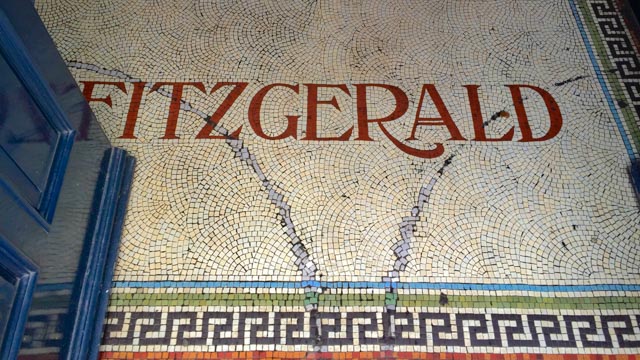
Bridge Hotel (Castle Garth) – Floor Mosaic
Sir John Fitzgerald John Fitzgerald was born in Tipperary, Ireland in 1857. After completing an apprenticeship in the wine and spirit trade, he moved to Newcastle in 1878 and started his own business. In 1896, he branched out and bought his first licensed premises, becoming a pioneer of the long bar system which would revolutionise social drinking in England. By…

Percy Street – Floor Mosaic
Bruce Building Once the home of Newcastle Breweries. Tags: floor mosaics
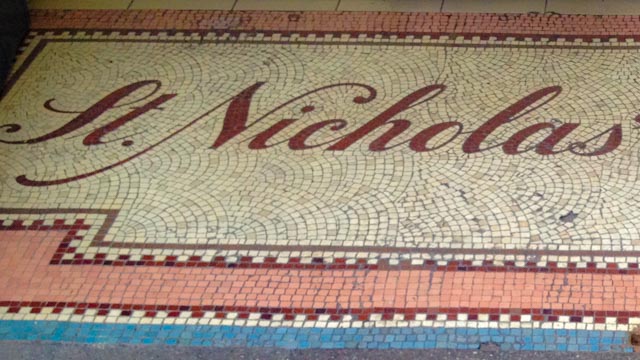
Amen Corner – Floor Mosaic
Once St Nicholas Chambers now St Nicholas Apartel, hopefully the mosaics will remain undisturbed Tags: floor mosaics

Clayton Street West – Floor Mosaic
Probably the best preserved of all Newcastle’s outdoor floor mosaics. Building currently used as apartments. Tags: floor mosaics

Collingwood Street – Floor Mosaic
Collingwood Street has a surprising number of floor mosaic fragments. Photographs tend to flatter them. Many are in a really bad condition Tags: floor mosaics

Blackett Street – Floor Mosaic
On the floor as you go into Northern Goldsmiths on Blackett Street. One of the few mosaics where the company still exists Tags: floor mosaics
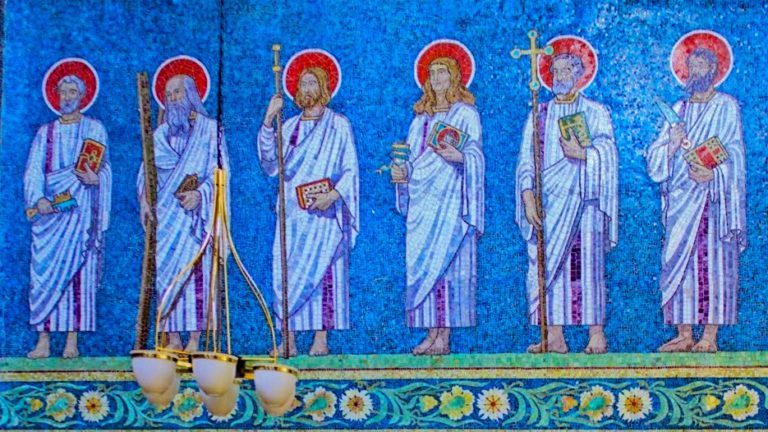
St George’s Jesmond – Charles Mitchell (1891)
The mosaic-work was completed by Messrs Rust & Co. of Battersea. Many of the figures in the rich mosaic-work were designed by the northern PreRaphaelite artist Charles William Mitchell, son of the church’s benefactor The mosaic-work was completed by Messrs Rust & Co. of Battersea More information – the Victorian Web Tags: wall mosaics

Passing – Ian Patience (1983)
‘Passing’, a triptych mosaic, expresses the passing of time through the image of a young family. The outer panels depict them on a day trip to the beach while the central panel depicts a nocturnal seascape, devoid of human activity. More Information Metro Art Tags: wall mosaics

Newcastle through the Ages
Worth 10 minutes of anyones time, Newcastle’s most informative public art work, themes of Oceanus, Monkchester, Pons Aelius and Geordie, engineering, architecture, shipwrights, artists and social reformers. 2.3m high 2.7m wide. More detail from Co-Curate at Newcastle University Tags: history of newcastle, wall mosaics
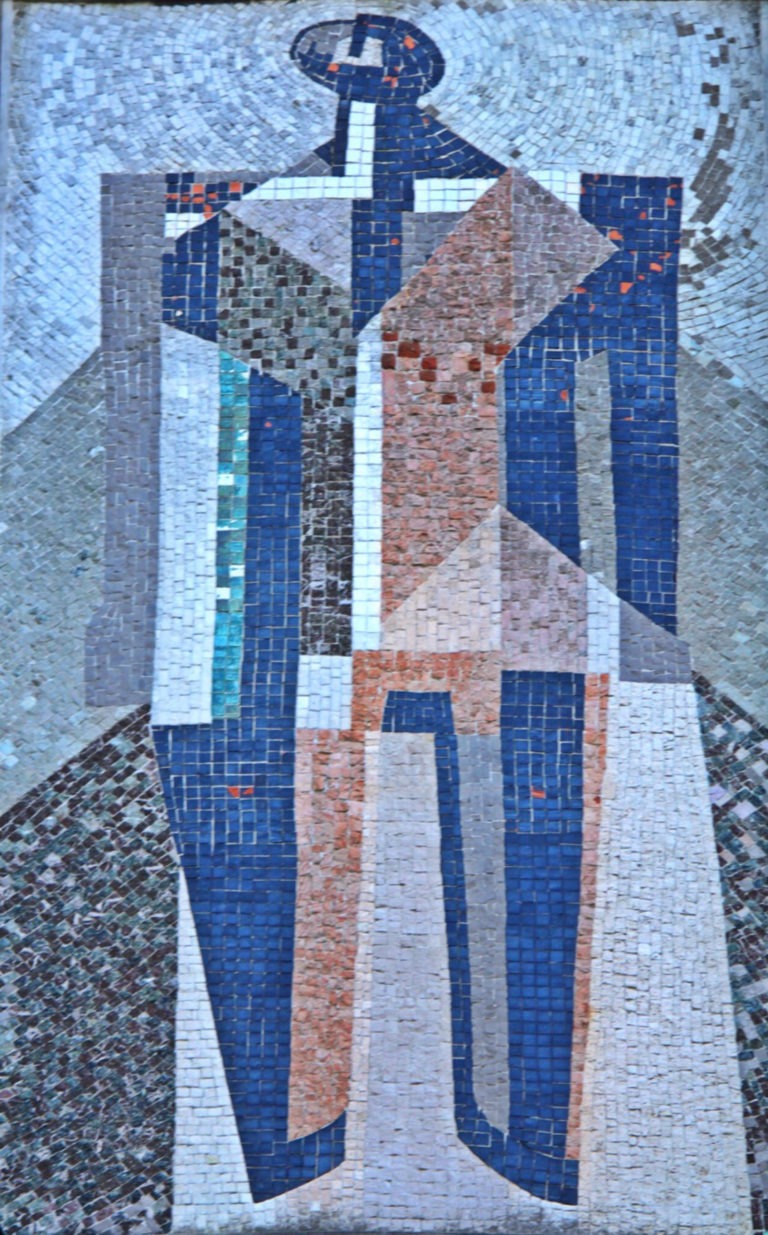
Mosaic Panels – Dorothy Annan (1959)
3 marble mosaics commissioned for £1,507. The figures represent space travel, mining and architecture. The mosaics are quite high up, binoculars recommended. Only three public murals by Annan survive: the mural previously at the Fleet Building, the three-panel work at King’s College in Newcastle, and a panel at Caley Primary School in Limehouse, Tower Hamlets….

Tyne & Wear Metro (1980)
The initial Tyne and Wear Metro network opened between August 1980 and March 1984, mostly using converted former railway lines, linked with new tunnel infrastructure. Further extensions to the original network were opened in November 1991 (from Bank Foot to Airport),[11] and March 2002 (from Pelaw to Sunderland and South Hylton). wikipedia Tags: jesmond mosaics, railways, wall mosaics
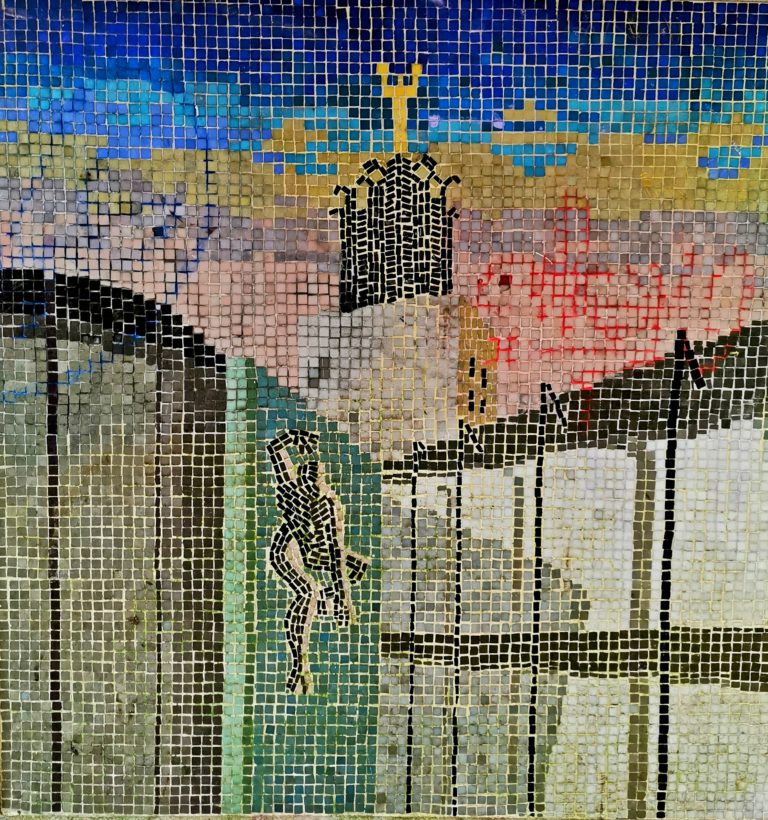
Newcastle Civic Centre (1968)
Newcastle Civic Centre is a local government building located in the Haymarket area of Newcastle upon Tyne, England. It is the main administrative and ceremonial centre for Newcastle City Council.[1] Designed by the city architect, George Kenyon,[2] the building was completed in 1967 and was formally opened by King Olav V of Norway on 14 November 1968.[3] It is a Grade II* listed building.[4] The Newcastle Civic Centre is the joint…
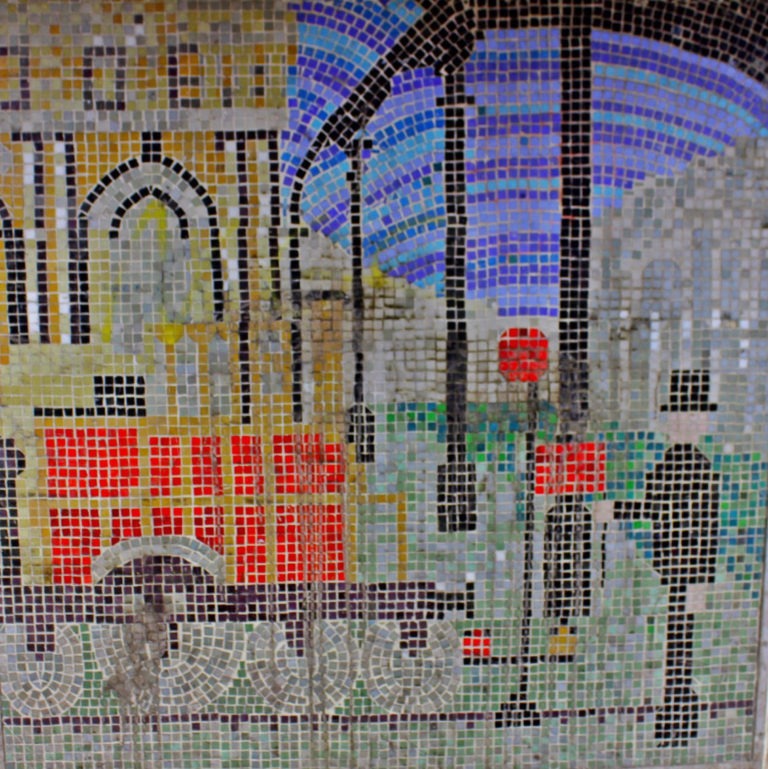
Newcastle Central Station (1850)
The station opened in August 1850, as part of the then Newcastle & Carlisle Railway and York, Newcastle & Berwick Railway. Now a Grade I listed building, it is located in the city’s Grainger Town area, to the west of the Castle Keep.[1] In Simon Jenkins‘ Britain’s 100 Best Railway Stations, the station was one of only ten to be awarded five stars. wikipedia Tags: central…
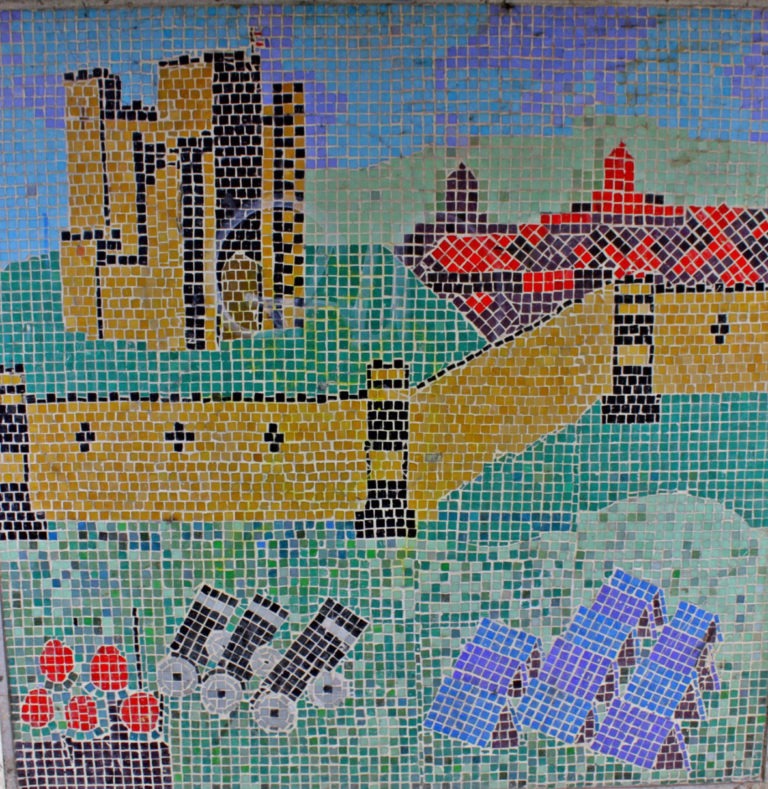
Newcastle Town Wall
The Newcastle town wall is a medieval defensive wall, and Scheduled Ancient Monument, in Newcastle upon Tyne, England. It was built during the 13th and 14th centuries, and helped protect the town from attack and occupation during times of conflict. It was approximately 3 kilometres (2 mi) long, at least 2 metres (6.5 ft) thick, up to 7.6 metres (25 ft) high, and had six main gates: Close Gate, West Gate, New Gate, Pilgrim Gate, Pandon Gate…
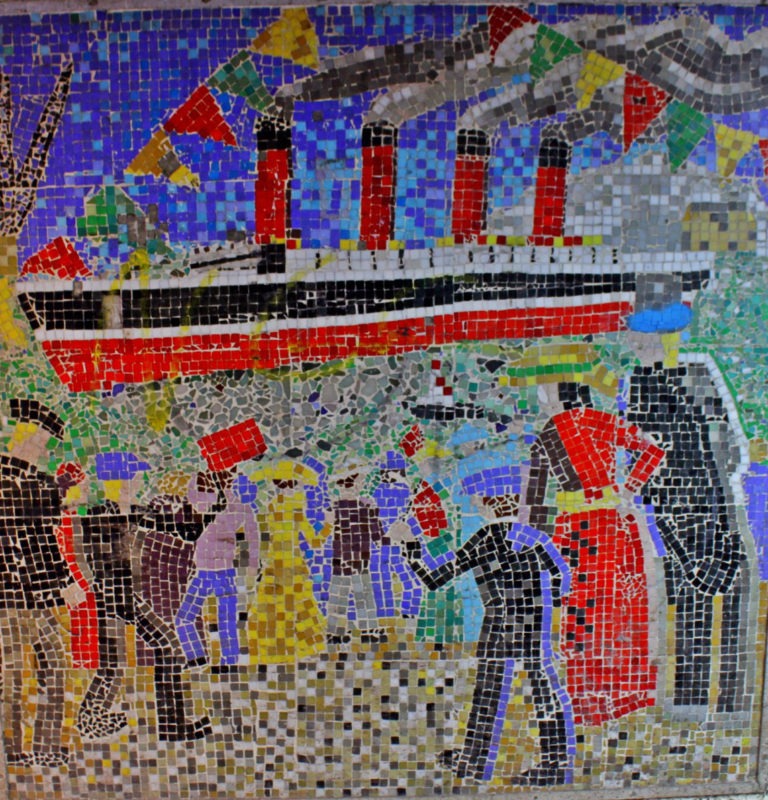
Mauritania 1906
RMS Mauretania was an ocean liner designed by Leonard Peskett and built by Wigham Richardson and Swan Hunter for the British Cunard Line, launched on the afternoon of 20 September 1906. She was the world’s largest ship until the launch of RMS Olympic in 1910. Mauretania became a favourite among her passengers. She captured the eastbound Blue Riband on her maiden return voyage in December 1907, then claimed the westbound Blue…
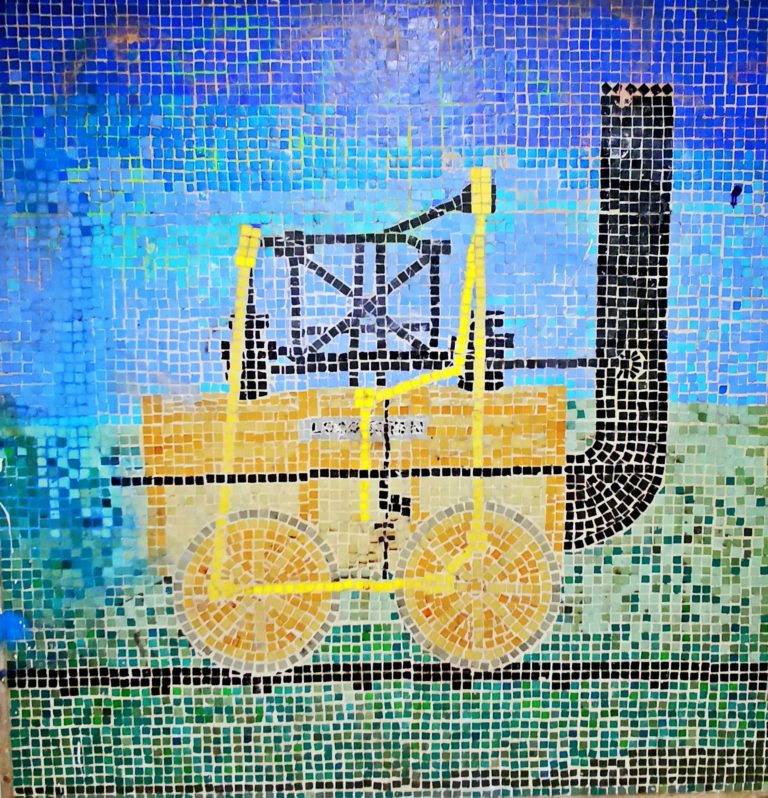
Stephenson’s Rocket
Rocket was designed by Robert Stephenson in 1829, and built at the Forth Street Works of his company in Newcastle Upon Tyne. Though Rocket was not the first steam locomotive, it was the first to bring together several innovations to produce the most advanced locomotive of its day. It is the most famous example of an evolving design of locomotives…
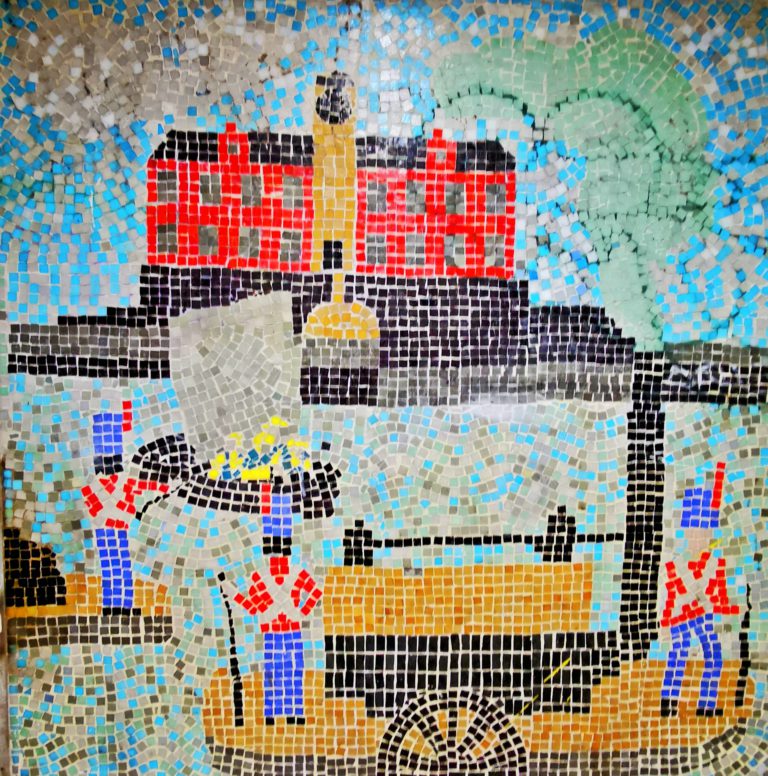
Keelman Mosaic
The Keelmen of Tyne and Wear were a group of men who worked on the keels, large boats that carried the coal from the banks of both rivers to the waiting collier ships. Because of the shallowness of both rivers, it was difficult for ships of any significant draught to move up river and load with coal…
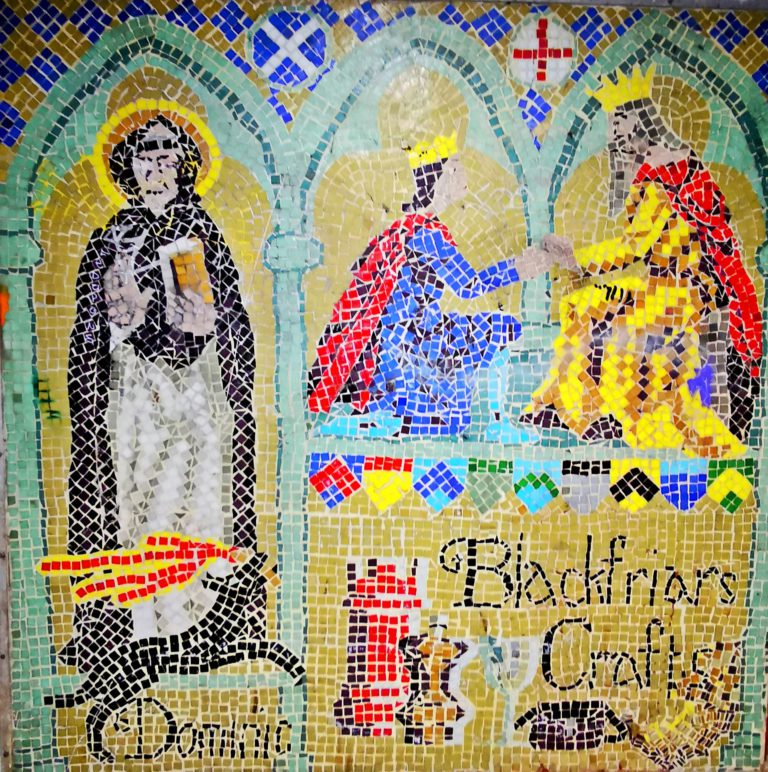
Blackfriars in Newcastle
Blackfriars in Newcastle During the early years of the 13th century, orders of friars began to establish themselves in England. Newcastle-upon-Tyne came to have five friaries within its walls: Blackfriars (Dominican) established in 1239; Whitefriars (Carmelite) established in 1262; Austinfriars (Augustinian) established in 1290 (now the site of the Holy Jesus Hospital); Greyfriars (Franciscans) established in…


